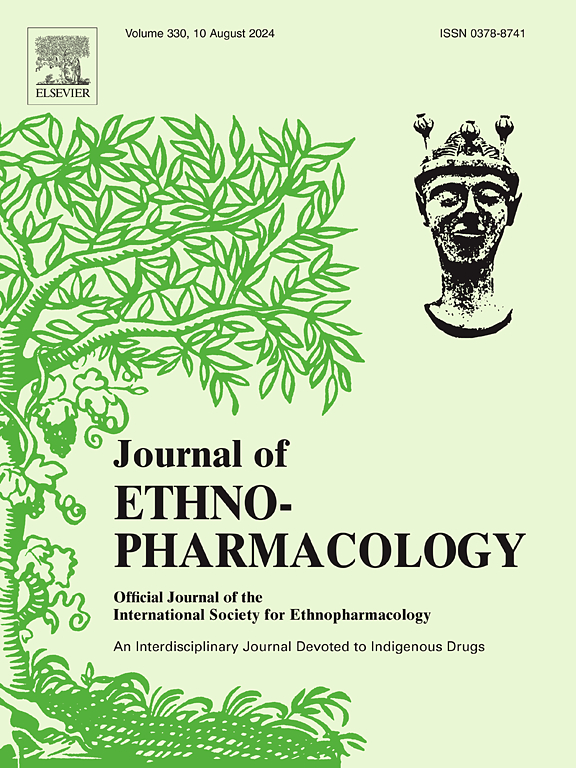摘要
民族药理学的相关性Blighia sapida 俗称 Ackee,是一种原产于西非的植物,具有重要的文化和治疗价值,尤其是在尼日利亚西部。传统上,尼日利亚西部地区将 Blighia sapida 胶囊放在热灰中加热,用于治疗绵羊和山羊的外伤。这一过程会使胶囊释放出一种液体,然后直接涂抹在整个皮肤患处。材料和方法用蒸馏水和乙醇提取植物化学成分,并在 40 °C 下浓缩。植物化学成分用变型 3800/4000 气相色谱-质谱联用仪(GC-MS)测定。结果 GC-MS 分析显示两种提取物中含有 15 种生物活性化合物,其中山奈酚含量最高。具有显著药理活性的化合物包括吡咯烷-2-基甲醇、芦丁、喹啉、芹菜素和柚皮苷。研究观察到水提取物和乙醇提取物的化合物重量和峰面积存在明显差异。急性毒性研究表明,口服 Blighia sapida 胶囊的水提取物和乙醇提取物的致死剂量高于 5000 毫克/千克,因为口服 10、100、1000、1600、2900 和 5000 毫克/千克的水提取物和乙醇提取物均无死亡记录。亚急性毒性结果表明,虽然生化指标有一些变化,但对肝肾功能没有明显的不良影响。组织学分析表明,处理过的动物的肾脏和肝脏结构正常。结论这项研究表明,皂荚的水提取物和乙醇提取物没有急性毒性,亚急性毒性也很小,表明在测试剂量下食用是安全的。Ethnopharmacological relevance
Blighia sapida, commonly known as Ackee, is a plant native to West Africa, with great cultural and therapeutic value, particularly in Western Nigeria. Traditionally, Blighia sapida capsule is used in western Nigeria to treat ecthyma in sheep and goats by heating it in hot ash. This process causes the capsule to release a liquid, which is then directly applied to the entire affected area of the skin. However, there is limited information available on its phyto-constituents and medicinal effects.
Aim of the study
This work examined the bioactive constituents, acute toxicity, and sub-acute toxicity of aqueous and ethanolic extracts of Blighia sapida capsule.
Materials and methods
Extraction of phytochemical constituents was carried out with distilled water and ethanol and was concentrated at 40 °C. The phytochemical constituents were determined using a variant 3800/4000 gas chromatography-mass spectrometry (GC-MS) machine. Lorke's method was employed to determine the acute toxicity of the aqueous and ethanolic extracts of Blighia sapida capsule.
Results
The GC-MS analysis revealed 15 bioactive compounds in both extracts, with kaempferol being the most abundant. Notable pharmacologically active compounds included pyrrolidin-2-ylmethanol, rutin, quinoline, apigenin, and naringenin. The study observed distinctive differences in aqueous and ethanolic extracts compound weights and peak areas. Acute toxicity study depicts that the lethal dose of aqueous and ethanolic extracts of Blighia sapida capsule is above 5000 mg/kg as no mortality was recorded in the oral administration of 10, 100, 1000, 1600, 2900, and 5000 mg/kg of aqueous and ethanolic extracts. Sub-acute toxicity results indicated no significant adverse effects on kidney and liver function, although some variations in biochemical parameters were observed. Histological analysis showed normal renal and hepatic architecture in treated animals.
Conclusion
This study demonstrated that aqueous and ethanolic extracts of Blighia sapida capsule exhibited no acute toxicity and minimal sub-acute toxicity, suggesting they are safe for consumption at the tested doses.

 求助内容:
求助内容: 应助结果提醒方式:
应助结果提醒方式:


